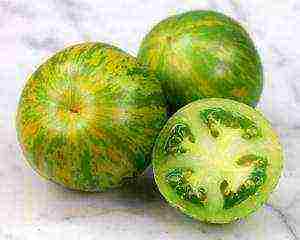Content
- 1 What do you need to know when planting a beautiful creeper?
- 2 What clematis do not require special care?
- 3 There are clematis:
- 4 The most unpretentious variety of clematis
- 5 Clematis, well adapted for the Moscow region
- 6 Dates for planting seedlings, site selection
- 7 What does the care of a perennial vine contain?
- 8 How does clematis reproduce?
- 9 How to prepare clematis for wintering?
- 9.1 Ballerina (lat.Balerina)
- 9.2 Variety Nadezhda (lat.Nadezhda)
- 9.3 Nikolay Rubtsov (Latin Nikolaj Rubtzov)
- 9.4 Clematis Ville de Lyon (lat.Ville de Lyon)
- 9.5 Variety Anastasia Anisimova (lat.Anastasija Anisimova)
- 9.6 Clematis Luther Burbank
- 9.7 Clematis variety Miss Bateman (lat.Miss Bateman)
- 9.8 Comtes de Bouchaud (Latin Comtesse de bouchaud)
- 9.9 Purpurea Plena Elegans (lat.Purpurea Plena Elegans)
- 9.10 Variety Avangard (lat.Avant-Garde)
- 9.11 Lemon Dream variety (lat.Lemon Dream)
- 10 Outcome
- 11 Avant-Garde
- 12 Anastasia Anisimova
- 13 Ballerina (Balerina)
- 14 Ville de Lyon
- 15 Gipsy Queen
- 16 Luther Burbank
- 17 Purpurea Plena Elegans
- 18 Rouge Cardinal
- 19 Clematis: groups by pruning method
- 20 Clematis: the best varieties
Seeing how a perennial liana blooms, any gardener will want to have such beauty in his garden. But in order to enjoy a wonderful spectacle every year, you should know which clematis is the most unpretentious variety.
Until recently, such a plant was a rarity on our sites, but now it has gained great popularity. The cultivated bindweed perennial gives the garden an original uniqueness. Only he is able to form numerous flowers of various shapes and colors in a small area for a long time and make passers-by admire their unique beauty.
What do you need to know when planting a beautiful creeper?
You should not be afraid to plant such a perennial. Its cultivation is not difficult, just when planting, you need to take into account some features:
- he is a fast-growing vine, which adds fifteen centimeters to the shoot in a day
- its comfortable place is sunny, calm
- the soil should be drainage with plenty of organic matter
- the flower drinks water well, but does not like its stagnation
- the ground must be permeable
- due to the lack of a long root system, it is better to cover it for wintering
- he has a positive attitude towards feeding
- you need to retreat 70 cm from the wall of the house or fence
- when planting, the roots should be spread out
- a distance of one and a half meters is maintained between several bushes
- lattice, pergola, trellis are installed from east to west
- if the roots dry up when buying, it is better to lower the bush into water so that it collects a sufficient amount of moisture for itself
- the hole should be made according to the size of the bush, for a large one it should be 70x70 cm and at least 70 cm deep for good root development
- when buying, it is worth considering the climatic zones
If such a list does not scare you, then in the near future clematis will delight you with abundant flowering and decorate your site.
Which clematis do not require special care?
Experienced gardeners recommend that you first take on clematis, which do not require special attention in order to gain experience and then grow unusual varieties.
According to breeders, the variety of clematis exceeds half a thousand. They are divided according to the pruning technique.
The first group includes buds that form on the shoots of the current season. In the second, the buds that appear on the shoots of the last growing season.
Any pruning is a good incentive for large stem formation, wide branching and an abundance of flowers.
There are three main types of clematis:
- Herbaceous perennial, in which all stems die off at the end of the growing season
- Half-shrub - in this species, only the top of the bush dies off, and the bottom remains for several seasons
- Shrubs are formed lignified stems that overwinter well and do not require pruning.
Lianas are wild, large and small-flowered, climbing and bush.
The varieties used in landscaping, in personal plots, are former wild clematis.They grew in mild climates, grew well and bloomed in small inflorescences. Their colors are limited - it is white, half-tones of blue, yellow. Rarely, but red, purple small flowers with a diameter of up to four centimeters come across. The largest collection of them (more than two hundred species) is located in the Crimean Botanical Garden.
There are clematis:
Hybrid
These are well-developed perennial vines, dwarf shrubs. Clinging to branches, tips of leaves for any support, they grow up to three meters in length. Their inflorescences consist of single flowers up to twenty centimeters in diameter, which, after flowering, turn into fluffy rounded fruits. The plant impresses with its decorative effect, thanks to its beautiful dissected leaves, and at the time of flowering, the bush looks like a blossoming fire. This species needs a windless, sunny place, powerful support, because the weight of an already mature bush can be more than one hundred kilograms.
Large-flowered
A wonderful decorative group of lianas with flowers up to twenty centimeters, of various bright, saturated colors. They are most popular on home estates, they create beautiful compositions in various landscape designs.
These groups, depending on the growing season and other significant differences, are also divided into several subgroups.
The most unpretentious variety of clematis
There are enough varieties of it, you can choose any:
Manchu - decorative plant resistant to severe cold, blooming luxuriantly with fragrant white flowers, reaches a height of two meters. Its part, which is above the ground, disappears in the autumn, and in the spring it quickly begins to grow, releasing many young branches. The variety was bred specifically for temperate latitudes with a cold climate. It perfectly tolerates any frost.
Bush - the most popular species among people. Such a lobed shrub has become the dream of any clematis collector. There are a lot of branches growing, and they reach a height of up to a meter. Flowers that bloom in August are juicy yellow in color and have a diameter of up to four centimeters. Liana is evergreen, unpretentious, with non-dying shoots.
The president - is distinguished by abundant and long flowering. The blossoming star-shaped flowers have a rich purple hue. With proper care, such a vine blooms twice - May-June and August-September. The president, due to his unpretentiousness, adapts well to different climates.
Burning - long-growing deciduous species has a lush flowering, decorative beauty and winter hardiness. It starts flowering in early summer and ends in August. Climbs well on any support. The flowers are impressive with a strong, delicate aroma.
Zhakman - an original hybrid with huge flowers, obtained from clematis purple, woolly and Henderson. The species with lignified stems is the most popular due to the size of the flowers - up to fifteen centimeters. Differs in cold resistance and a longer flowering period - from mid-summer to mid-autumn. It perfectly frames gazebos, pergolas, arched and other garden structures. This clematis is one of a kind. Its main difference is twenty different large-flowered species that do not require careful maintenance.
Clematis from the Zhakman variety take root well in our latitudes:
Gypsy Queen - moderately growing liana, its height is up to three to four meters. Its feature is abundant flowering. The color of the flowers is a dark purple hue, which can turn into purple. Their diameter is fifteen centimeters. It develops well near the walls of houses, on the trellises of gazebos, near fences, and can also climb shrubs, conifers, deciduous trees and any supports.
Blue flame - the color is fully manifested in the fall, the flowers are large, up to eighteen centimeters in diameter, wide petals are bright blue with light veins. An adult plant reaches a height of three meters, and in order to give a liana a beautiful shape, you just need to build up a support.
Viola - a variety from Estonia is distinguished by long pedicels with velvety dark purple flowers up to twelve centimeters in diameter, with yellow-green stamens. The height of the bush reaches three meters, it ceases to please in August.
Rouge cardinal - grows in height by two meters, the diameter of the loose flowers is ten centimeters, the color is crimson red, the stamens are red. Blooms from July to September.
Such clematis decorate places of rest, create romance and coziness on the terraces or on any other site.
Clematis, well adapted for the Moscow region
In Russian regions, there are different weather conditions, so gardeners should pay attention to the unpretentious varieties of clematis for the Moscow region that have already been tested over the years. They are hardy, resistant to cold weather, temperature extremes and do not require special care.
Some of their popular names and common features:
Ballerina - the longest flowering variety - from May to the end of September. The flowers are large (up to 15 cm in diameter), white, densely blooming on young annual stems that reach three meters in height.
Hope - differs in large, well-loose, light burgundy flowers with sharp petals, resembling stars. Such a vine grows up to three meters and has two flowering periods - May-June and from July to autumn.
Nikolay Rubtsov - large (up to 17 cm in diameter) lilac flowers with contour stains, which bloom in May and constantly bloom almost until the beginning of autumn.
Ville de Lyon - flowers of bright, juicy red color with a touch of fuchsia and with rounded petals. The unusual color gives the bush a tropical exotic look. It grows up to three meters and blooms throughout the summer with open inflorescences on newly emerged shoots.
Dates for planting seedlings, site selection
It is possible to plant a perennial liana stalk in open ground both in spring and autumn.
In latitudes with cold climatic conditions, planting is best done in spring, in early May. The landing site should be calm. Clematis loves neutral drainage soil with useful substances. The fertility of the soil can be raised with a high-quality mixture of fertilizer with phosphorus (150 gr.), Dense peat mass (1 bucket), sand (1 bucket), compost (1 bucket).
The seedling must have one good shoot and good roots. It is installed in a pit, at the bottom of which there is already drainage, then it is covered with a part of the prepared mixture and watered abundantly. When planting, you should pay attention that the root collar remains at a ten centimeter depth. The rest of the earth is then gradually filled up.
In autumn, clematis are planted in the south, the warm and mild climate conditions of such latitudes allow this to be done in September-October. In this case, a climbing perennial is planted with vegetative buds that have already appeared. The planting option is spring, but the planting hole should be covered with all the soil at once. The surface layer of the soil must be mulched with sawdust or fallen leaves. When spring comes, in order to make it easier for young shoots to break through, the soil from the hole to the depth of a finger is selected, and by the end of the growing season it returns back.
What does the care of a perennial vine contain?
Proper planting and good maintenance will ensure that any plant grows well. Clematis must be watered at least twice every ten days - two buckets for each bush. You should also loosen the soil, remove weeds from the near-trunk area.
Pruning vine shoots plays an important role in its development. It is carried out with a pruner, garden shears.
There is sanitary pruning, which is carried out at random in time. It removes damaged, dried out branches and sun-burnt areas. Autumn - requires special attention, because it affects the appearance of clematis in the new season.
Special anti-aging pruning guarantees a lush, abundant and long-lasting flowering. It consists in removing branches that are more than three years old.
Gardeners with experience in such events use the three-tiered pruning method, regardless of which group clematis belongs to. Each tier should contain three to four shoots, and their length should be left as follows:
- in the first tier - up to 150 cm
- in the second - up to 100 cm
- in the third - three buds above the surface of the earth
All other shoots are removed.
Early flowering pleases the shoots of the first tier, then the second, then the shortest ones. But clematis blooms all summer. To increase the size of the flowers and the bush does not become thick, the shoots that have finished flowering should be cut off by fifty centimeters. This procedure can be carried out until August, but not later. Liana needs to gain strength to survive the cold months.
During the formation of buds, clematis can be fed. It responds well to special flower mixes.
How does clematis reproduce?
Liana with small flowers propagates by seeds; this method is not suitable for hybrids with large flowers. They do not retain their varietal characteristics.
Experienced gardeners recommend:
Divide the bush only if it is five or more years old. The lateral part of the roots with stems is cut off with a shovel and planted separately. The bush grows quickly and blooms early
Layering in the spring. The processes that are on the side are pressed against the ground, you can fix this position with brackets. On the shoot, a powerful bud is chosen and covered with a ten-centimeter layer of soil. The branch takes root and for the coming spring it can be separated and planted as an independent bush.
Breeding by cuttings - this method is used to get more cuttings. The middle part of the length of adult, strong shoots or green or lignified cuttings are cut. The upper cut should be straight, the lower cut at an angle of 45. It should be noted that there are at least two nodes on the cuttings, then they take root in greenhouses, greenhouses, in which the required humidity and temperature are constantly maintained.
To be vaccinated, but this method is used when propagating very rare and especially valuable varieties of clematis, which cannot be grafted or divided.
How to prepare clematis for wintering?
If pruning was carried out in the fall, the base of the bush should be covered with a mound of earth up to fifteen centimeters high. The soil can be mixed with old, rotted manure, compost, ash from a tree. It is imperative to ensure that the root collar is carefully closed. Branches are removed from the lattice, neatly stacked. As soon as a constant subzero temperature is established, they should be covered with breathable materials to ventilate the bush. In regions with a harsh climate, sawdust, dry leaves, peat, and needles are poured onto the shelter from above.
In the spring, when the time of frost has passed, everything that covered the vine is removed, a little later the mound is also removed.
If the bush seems to be frozen, you should not rush to uproot, the roots can please with young shoots.
Cultivation of clematis, care, reproduction may seem like a laborious process, but you can enjoy the unique beauty of unique inflorescences, which, believe me, are worth your efforts and time!
Clematis - varieties for the Moscow region and Siberia photo
Various types of clematis have long conquered the hearts of Russian flower growers. This "western" flower blooms profusely and luxuriantly, but at the same time it is highly sensitive to temperature extremes and is demanding to care for.
Even experienced gardeners do not always succeed in growing a lush liana and achieving long flowering, the main mistake is the wrong choice of a clematis variety that is not suitable for certain climatic conditions. The weather conditions in Russia vary too much throughout its territory, therefore, when planting, it is necessary to pay attention to proven varieties that are resistant to frost and temperature extremes and are undemanding to care.
The best varieties of clematis for the Moscow region
When choosing flowering plants for your suburban area, you should pay attention not only to the bright coloring and splendor of flowering, but also to the ability to withstand the climatic conditions of the Moscow region. In the section you will find suitable varieties of clematis, photo with the name, and general characteristics of flowering vines.
Ballerina (lat.Balerina)
One of the longest flowering clematis, liana blooms from May to September. White Clematis, Ballerina varieties are a real find for gardeners who prefer vines with large flowers, up to 15 cm.
Clematis white varieties Ballerina are distinguished by large flowers
Flowering occurs on young annual shoots with single, but frequent flowers. The height of the vine reaches three meters.
Variety Nadezhda (lat.Nadezhda)
A Soviet variety with large, light-burgundy flowers, reaching 14 cm.The petals have a pointed shape, so the flowers, when opened, resemble stars and are clearly visible.
 Clematis varieties Nadezhda blooms twice a season
Clematis varieties Nadezhda blooms twice a season
The height of the vine reaches 2.5-3 meters. The flowering of the plant begins in May and ends in early June, then in the middle of summer the clematis of the Nadezhda variety blooms again.
Nikolay Rubtsov (Latin Nikolaj Rubtzov)
The variety is distinguished by lilac flowers, on the petals of which the contour is repeated with stains of the same color. Plant height does not exceed 2.5 meters, flowers are large, up to 17 cm in diameter. Clematis varieties Nikolay Rubtsov bloom from May until the end of summer, continuously replacing one flower with another.
Clematis varieties Nikolay Rubtsov
Clematis Ville de Lyon (lat.Ville de Lyon)
One of the brightest clematis, the flowers of which are painted in a rich red color with a tint of fuchsia. The petals are ovoid and unevenly colored, giving the flowers the exotic look of a tropical plant.
Clematis Ville de Lyon reaches three meters in height
The height of the vine reaches three meters. Blooms from the end of May and all summer on the shoots of the current year.
Clematis varieties for Siberia
In the harsh climate of Siberia, preference should be given to those varieties of clematis, in which flowering occurs on overwintered shoots. This is a fairly large group of varieties, among which you can choose plants in any color scheme. There are also varieties that bloom on the shoots of the current season, suitable for the conditions of northeastern Russia. Such clematis, varieties with photos and descriptions are given below in our article.
Variety Anastasia Anisimova (lat.Anastasija Anisimova)
Soviet variety, tested for almost half a century. Pale heavenly medium-sized flowers with a diameter of 10-14 cm adorn a low, up to 2 meters liana.
Clematis Anastasia Anisimova has been grown in Russia for over 50 years
Bloom from July to October, abundant and constant. Suitable for landscaping balconies and growing in pots.
Clematis Luther Burbank
An old variety of Soviet selection with large flowers of a dark purple color, ranging in size from 15 to 25 cm. The height of the vine reaches 2.5 meters, flowering begins in July and ends at the end of October.
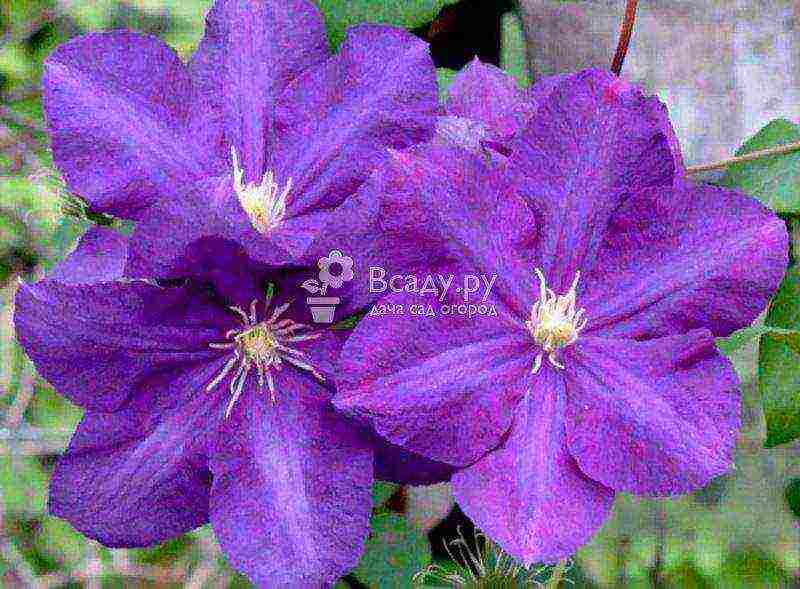 Clematis variety Luther Burbank is not afraid of fungal diseases
Clematis variety Luther Burbank is not afraid of fungal diseases
Clematis of the Luther Burbank variety is very resistant to frost and disease. For the winter, it is recommended to cut off all shoots at the root. One of the most common varieties of clematis in Russia.
Clematis variety Miss Bateman (lat.Miss Bateman)
A representative of the white clematis group with silky petals. The height of the vine is up to 2.5 meters. Flowers appear on last year's shoots in mid-June. The growth of the current year blooms later, but the flowers do not fall until the very frost.
Miss Beyman's white clematis blooms until the frost
Flowers with a diameter of 10-15 cm, clearly visible to the dense greenery of the plant. Before sheltering for the winter, shoots should not be cut off.
Comtes de Bouchaud (Latin Comtesse de bouchaud)
One of the most popular pink varieties. Small flowers, 10-15 cm in diameter, adorn a vine with a height of 2-2.5 meters.The sepals are slightly wavy at the edges, slightly raised, which makes the flower very graceful.
Clematis Comtes de Bouchot is very popular for its delicate pink flowers
Bloom from June to August or September. The variety has increased frost resistance.
Winter-hardy terry varieties of clematis
Among the huge number of varieties of clematis, the group of terry plants stands out - their unique decorative qualities distinguish them from other flowers and make them the most noticeable plants in the garden. Consider the most winter-hardy and unpretentious varieties that are suitable for growing in the harsh climate of the Moscow region and Siberia.
Purpurea Plena Elegans (lat.Purpurea Plena Elegans)
French variety, very popular with gardeners over the past century. Terry burgundy flowers with a diameter of 5-6 cm without stamens and pistil literally shower shoots up to 3.5 meters high from July to September.
 Terry pods of clematis - variety Purpua Plena Elegance
Terry pods of clematis - variety Purpua Plena Elegance
Differs in unpretentiousness to the soil, grows quickly and is very winter-hardy. Suitable for container gardening; before shelter for the winter, the shoots are cut off.
Variety Avangard (lat.Avant-Garde)
Liana up to three meters high, blooms not very large, up to 5 cm, but very beautiful red flowers. Terry pink center.
 Terry clematis varieties Avangard for Siberia, photo
Terry clematis varieties Avangard for Siberia, photo
The small size of the flowers is compensated by their large number on the shoots. Long bloom from June to September-October. The variety is winter-hardy, but pruning is required before sheltering for the winter.
Lemon Dream variety (lat.Lemon Dream)
Absolutely unlike all other clematis varieties. The flowers are large drooping terry bells of light yellow color, with a faint bitter aroma.
 Terry clematis varieties Lemon Dream are suitable for the Moscow region and Siberia
Terry clematis varieties Lemon Dream are suitable for the Moscow region and Siberia
Plant height is about 3 meters, the first flowering in May, then repeated from July to September. It can be used not only as a vine, but also as a ground cover plant.
Outcome
Clematis can be a lush blooming decoration of your garden, balcony or terrace. You just need to study the varieties of clematis before planting and choose the most suitable for your region.
Clematis is considered an exotic plant. But his capricious disposition is often exaggerated. Even a beginner can get a beautiful vine in his garden. To do this, you need to choose the most unpretentious variety of clematis.
Clematis are different. And in almost every group you can find attractive plants that are easy to care for.
The clematis Atragene, Jackmanii, Integrifolia and Viticella adapt best to the unstable climate of the middle zone. In addition, it should be borne in mind that plants with blue, purple and purple flowers are less demanding in care. The lighter the petals, the more capricious the plant.
Today, gardeners are most attracted by the varieties of large-flowered clematis (in particular, their hybrids). Although small-flowered forms are considered less demanding on agricultural technology.
So, let's see which varieties of clematis will create less trouble for flower growers and will delight them with lush flowering.
Avant-Garde
This medium-sized liana from the Viticella group has medium-sized flowers (up to 5 cm in diameter), but there are a lot of them. The outer petals are red, and the double center is pink. Flowering is observed from June to September, not only in the sun, but also in partial shade. The plant is winter hardy, but in late autumn it needs a lot of pruning.
Anastasia Anisimova
This clematis from the Integrifolia group has been cultivated in Russia for over 50 years (the variety was bred in 1961). Liana grows up to two meters. From July to October, its shoots are decorated with light, sky-blue flowers (10-14 cm in diameter) with six delicate petals. They are similar in color to smoky crystal. Up to 14 flowers bloom on one shoot.
The plant is suitable for growing in gardens and balconies.Resistant to fungal diseases and undemanding in maintenance.
The clematis variety got its name in honor of the oldest employee of the State Nikitsky Botanical Garden.
Ballerina (Balerina)
This variety is famous for its long flowering - from May to September. Among the green leaves, large (up to 15 cm in diameter) white flowers with dark cherry stamens appear on the shoots of the current and last year. Sometimes a greenish tint is barely noticeable on the petals.
The variety of white clematis is named after the outstanding ballerina Maya Plisetskaya.
Ville de Lyon
This variety of French origin is characterized by high winter hardiness and good immunity to fungal diseases. Large flowers of a red-carmine shade (in the bright sun - fuchsia color) with pubescent stamens bloom in June and do not fade until the end of summer. Over time, the flowers acquire a lilac-purple hue and become smaller. The petals of Ville de Lyon clematis are unevenly colored, which makes the plant even more attractive.
Gipsy Queen
This large-flowered clematis, like its “brothers”, loves light, but the root collar of the plant should be in the shade. Velvety deep purple or purple flowers (10-15 cm in diameter) with red-burgundy stamens abundantly cover the vine from June to September.
In late autumn, the plant needs a lot of pruning. It is suitable for growing near fences, walls, gazebos, pergolas, trellises and in small containers. In addition, clematis can climb natural supports: trees, deciduous and coniferous shrubs.
Luther Burbank
This variety was bred a long time ago, but thanks to its good resistance to frost and fungal diseases, it does not lose its popularity to this day. Large flowers (15-25 cm in diameter) with six purple petals begin to appear in July and wither only at the end of October. Light stripes on the petals and cream anthers in the center give a special charm to the flowers.
The height of the liana is 2.5-3.5 m. For the winter, clematis shoots are strongly cut off, leaving only 20-30 cm above ground level.
Purpurea Plena Elegans (Purpurea Plena Elegans)
This popular plant belongs to the Viticella group. Clematis of this variety has long been loved by flower growers for small (up to 7 cm in diameter) double burgundy flowers, which continuously, from June to September, densely cover a medium-sized liana (up to 3 m).
Clematis Purpurea Plena Elegance is suitable for planting near fences, pergolas, gazebos, old buildings, and also looks good as a ground cover plant. Not afraid of frost, needs strong pruning (third type).
Rouge Cardinal
This clematis received a gold medal at an exhibition in Holland. It was bred in France in 1968 and is a hybrid from the Jacquemann group (obtained from crossing Clematis Lanuginoza with Clematis Viticella).
From July to September, the vine (2-3 m long) is decorated with large (up to 15 cm in diameter) reddish-purple flowers with yellow stamens in the center. In favorable weather, the shoots lengthen by 5-10 cm or more in one day. The plant is resistant to disease and frost, in autumn it requires strong pruning.
If you're still not sure if you can grow this attractive vine on your own, take a look at our article 9 Frequently Asked Questions about Clematis. We hope that after reading it you will have no doubts, and a flower of one of the unpretentious varieties will soon decorate your garden!
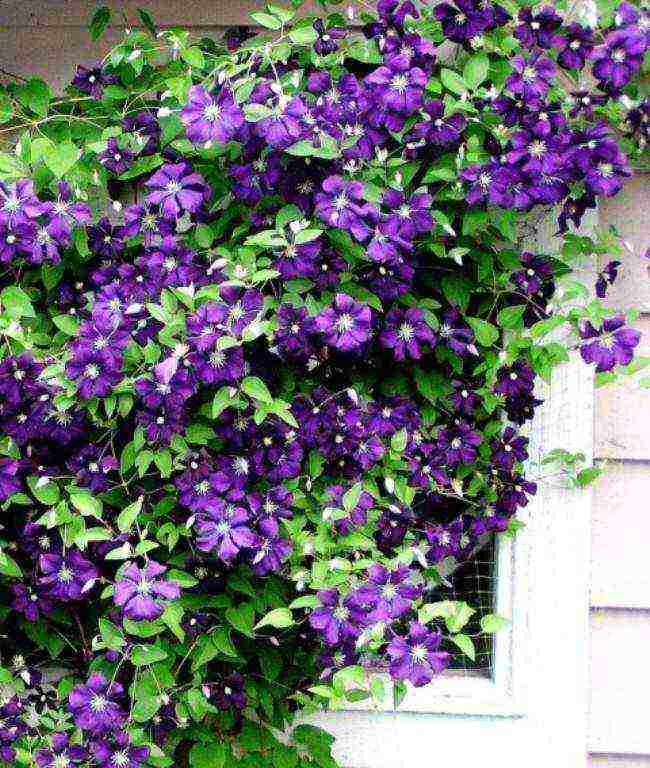
Every gardener dreams that his personal plot stands out with some extraordinary plant. It is to such an extraordinary and exotic plant that clematis can be attributed.
As you may have learned from our previous articles, clematis is a climbing garden plant that is perfect for vertical gardening of a summer cottage. Clematis will perfectly cope with the role of a hedge or decorative screen.
If we talk about the types of clematis, then they are not only climbing vines, but also shrubs or shrubs.Naturally, clematis also differ in the root system: root or core.
Clematis is not only an incredibly beautiful plant, but is also considered a rather unpretentious plant in terms of agricultural technology. If we talk about the "pluses" of this plant, then these include:
- clematis will help you close the area from unwanted glances
- he delights others
- the flower takes root well
- the plant boasts abundant flowering from early June to early October
- in case of death, has the ability to heal itself for several years
- clematis is suitable both for growing in containers and for landscaping walls, arbors, etc.
- clematis has many varieties
If we talk about the best varieties of clematis, then they differ in both shape, size, appearance (differ in color), and flowering time. Conventionally, clematis can be divided into three groups depending on the time of year when they bloom.
Clematis: groups by pruning method
— First group: blooming on last year's shoots
— Second group: blooming, both on the shoots of the last year and on the shoots of the current year
— Third group: blooming on shoots of the current year only
Clematis of the first group practically do not need pruning. Only flowers that wither and stems that begin to dry out are trimmed. This group includes such varieties as Atragena, Montana.
Clematis of this group need periodic so-called. "Rejuvenating" pruning. This pruning is done once every couple of years. "Rejuvenating" pruning consists of very low pruning of the plant. Thanks to this method, clematis will become "healthier".
Clematis of the second group need pruning in early spring 1.5 meters from the ground to strong buds. This group includes hybrid large-flowered clematis (Ashva, Piilu, President, Crimson Star, Gypsy Queen).
Clematis of the third group are the easiest to care for. The plant of this group is pruned in early spring before active growth begins. Clematis of this group are pruned to a level of 30-40 cm from the soil to strong buds. This group includes varieties Jackmani and Rekt.
Also, clematis can be divided into two groups based on the size of the flower:
- small-flowered clematis (diameter up to 10 cm)
- large-colored (more than 10 cm in diameter)
If we talk about small-flowered clematis, then, basically, they are wild-growing. They reproduce by seeds and are considered quite unpretentious to natural conditions.
Small-flowered varieties of clematis are considered as: Chinese Clematis, Alpine Clematis, Purple Clematis.
Large-flowered varieties of clematis include: Clematis Jacques, Clementis Lanuginosa, Clementis Taxenzis and others.
Large-flowered clematis are the most popular in our country. It is about the hybrid large-flowered varieties that I propose to learn more about.
Clematis: the best varieties
Variety "Piilu"(Piilu)
Clematis variety "Piilu"
The Piilu clematis variety is one of the most popular clematis varieties. This flower of incredible beauty is a liana about two meters long. The flowers are pale lilac or pale pink with a passing dark pink stripe in the middle and bright yellow stamens. The diameter of the flower is 10-12 cm. It blooms both on the shoots of both the current and the previous year.
Clematis variety "Comtessede Bouchaud"
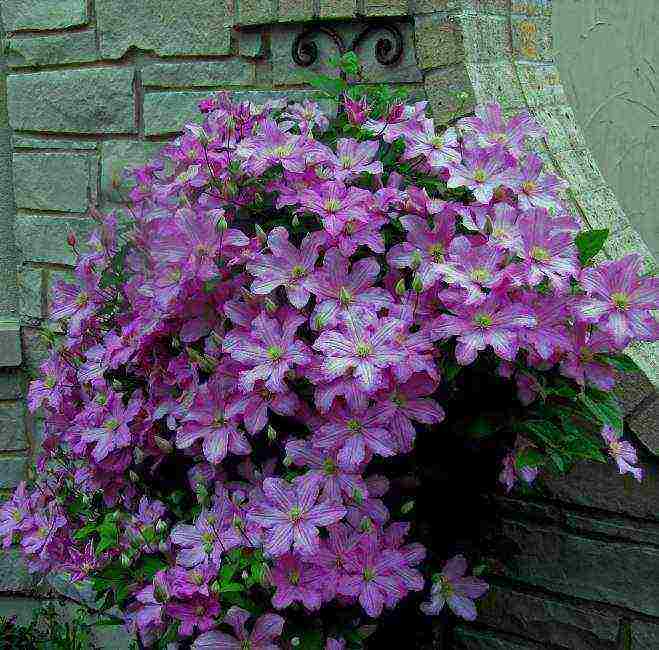 Clematis variety "ComtessedeBouchaud"
Clematis variety "ComtessedeBouchaud"
Clematis variety "Comtessede Bouchaud" is considered one of the best clematis varieties. This variety has earned its popularity not only due to its unsurpassed beauty, but also its resistance to cold and disease.
The plant can reach up to three meters in height, has pale pink flowers and creamy yellow stamens. The flowers of this variety have six petals, the surface of the flowers is rather rough, the tips of the flowers are often curved downward. Flowers bloom from June to September. Blooms on the shoots of the current year
Clematis variety "ComtessedeBouchaud" is excellent for growing on the balcony, and for growing near walls, arbors, etc.
Clematis variety "Romantika"(Romance)
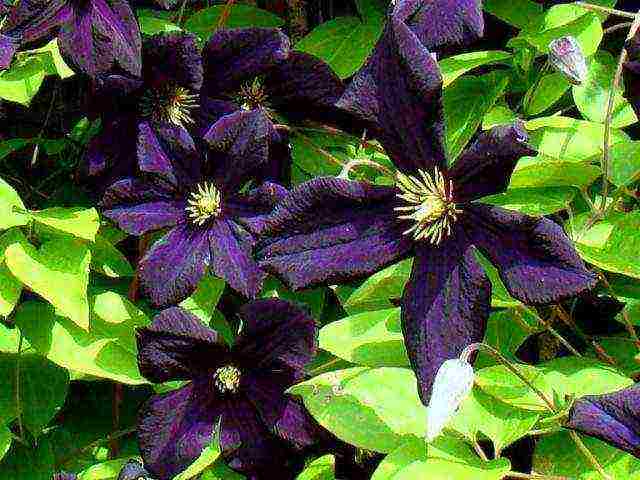 Clematis variety "Romantika"
Clematis variety "Romantika"
Clematis "Romance" is a fairly popular variety among gardeners. This flower has a deep purple, almost black color and pale pink stamens. In height "Romance" can reach up to 2.5 meters. The flowering period is from July to September. Blooms on the shoots of the current year.
This variety is excellent for vertical gardening (for planting near garden supports). Clematis of this variety needs special care - planting in shady places, strong pruning and protection from powdery mildew. "Romance" prefers humus-rich, loose, fertile soil.
Clematis variety "Gipsy queen"(Gypsy Queen)
Clematis variety "Gipsy queen"
Clematis "Gypsy Queen" also belongs to the large-flowered varieties of clematis. This variety has velvety dark purple or purple flowers and red stamens. The diameter of the flower is 10-15 cm. The height of the plant can reach four meters. Blooms profusely from June to September. Blooms on the shoots of the current year.
Like most clematis varieties, Gypsy Queen is a photophilous variety, however, the root collar of this plant should be in the shade. Suitable for growing both in containers and for growing by hedges.
Clematis variety "Westerplatte"
Clematis "Westerplatte"
Clematis "Westerplatte" is a very effective flower. This variety is famous for its velvety deep red flowers that do not fade. Flowers reach 15-16 cm in diameter. In height, this variety of clematis can reach up to three meters. Blooms profusely from June to September. It blooms both on the shoots of the current year and on the shoots of the previous year.
“Westerplatte” is a light-loving variety, it needs a well-fertilized, loose and fertile soil. It is a perennial plant, fairly hardy and disease resistant. It is planted near bushes and fences.
Clematis variety Maidwell Hall (Midwell Hall)
Clematis variety Maidwell Hall
Midwell Hall is a very delicate variety of clematis. The color of this variety is from blue to pale purple, the flowers are velvety or even double. It will start to delight the eye with unsurpassed bells already at the beginning of May. Because this variety is early, it is not afraid of frost.
The Midewell Hall variety grows up to 2.5 meters and climbs beautifully up the nearby trees or bushes. This variety does not need diligent pruning because the flowers are already growing on last year's stems.
Clematis variety "Ballerina"
Clematis variety "Ballerina"
Clematis "Ballerina" - the variety is named after the outstanding ballerina Maya Plisetskaya. The flowers are snow-white or with a greenish tint and with dark cherry, almost brown stamens. The diameter of the flower is 10-15 cm. It blooms from May to September. It blooms both on the shoots of the current year and on the shoots of the previous year. The liana-like bush can reach three meters in height.
Clematis variety "Аsao" (Asao)
Variety of clematis "Asao" (Asao)
"Asao" is considered an early flowering variety of clematis. The flowers of this variety are very beautiful and very large. The diameter of the flower can reach 20 cm. The flowers are deep pink in color with a snow-white stripe in the middle and yellow stamens. Plant height - 2-3 meters. It blooms both on the shoots of the current year and on the shoots of the previous year.
It blooms from May to September and is quite hardy. This variety is recommended to be planted in partial shade, because he cannot stand hot places. It will perfectly take root near bushes or trees, which it can climb.
Clematis variety "Andromeda"
Clematis variety "Andromeda"
Clematis "Andromeda" is a delicate decoration for your garden. This variety pleases the eye with snow-white semi-double flowers with a crimson stripe in the middle and pale yellow stamens. The flowers are quite large and can grow up to 20 cm in diameter.The plant can reach a height of up to 4 meters, therefore, when choosing a place for planting, take this factor into account.
The flowering period is from May to September. It blooms both on the shoots of the current year and on the shoots of the previous year. Refers to frost-resistant varieties of clematis. This plant does not tolerate direct sunlight, because begins to wilt, therefore it is better to plant this variety in partial shade. Curls over both garden and natural supports.
Clematis variety “Mrs. N. Thompson "
Clematis variety "Mrs. N. Thompson»
Clematis “Mrs. N. Thompson "is a rather extraordinary and exotic flower. This variety is attractive for its unsurpassed appearance. The flowers of this variety are purple with a bright red stripe in the middle and red stamens. The flowers are quite large and can grow up to 20 cm in diameter.
Plant height is about 2.5 m. Clematis “Mrs. N. Thompson "blooms from June to September. It blooms both on the shoots of the current year and on the shoots of the previous year. This variety is quite frost and disease resistant. It should be planted in a sufficiently sunny and wind-protected area.
So, today we have considered the most popular and beloved varieties among gardeners, however, clematis have many more incredibly beautiful varieties that can decorate your garden plot, turning it into a place that creates a feeling of comfort and coziness.
Tatiana Kuzmenko, member of the editorial board Sobcor of the Internet edition “AtmAgro. Agroindustrial Bulletin "
